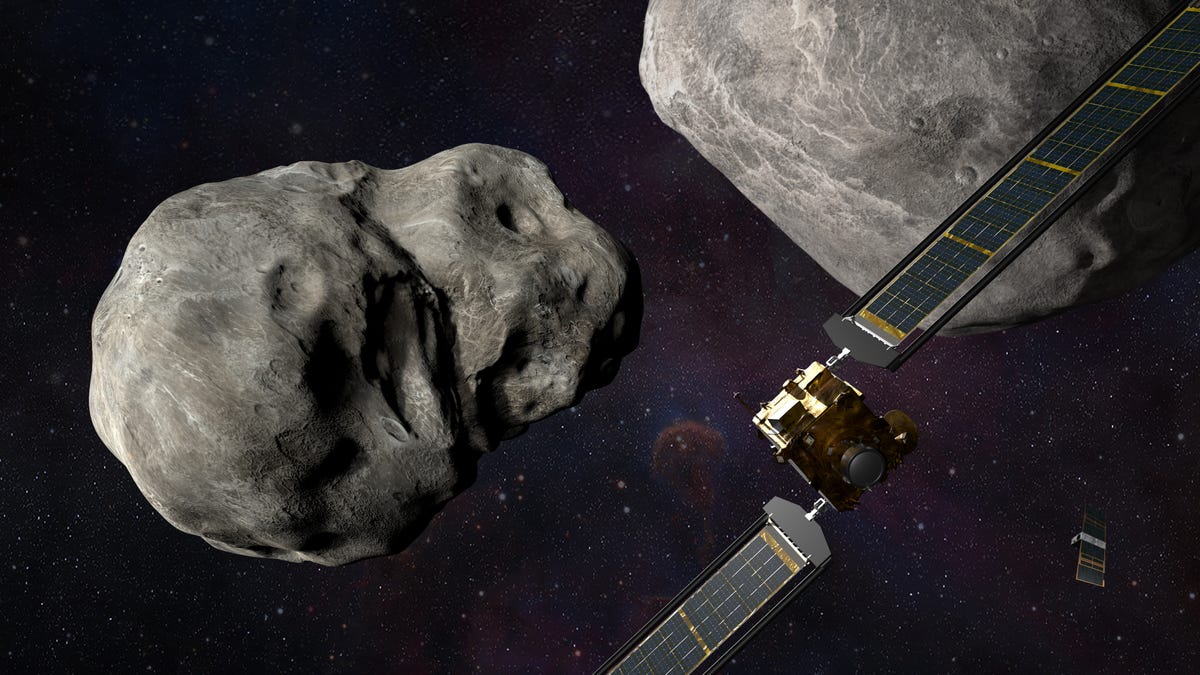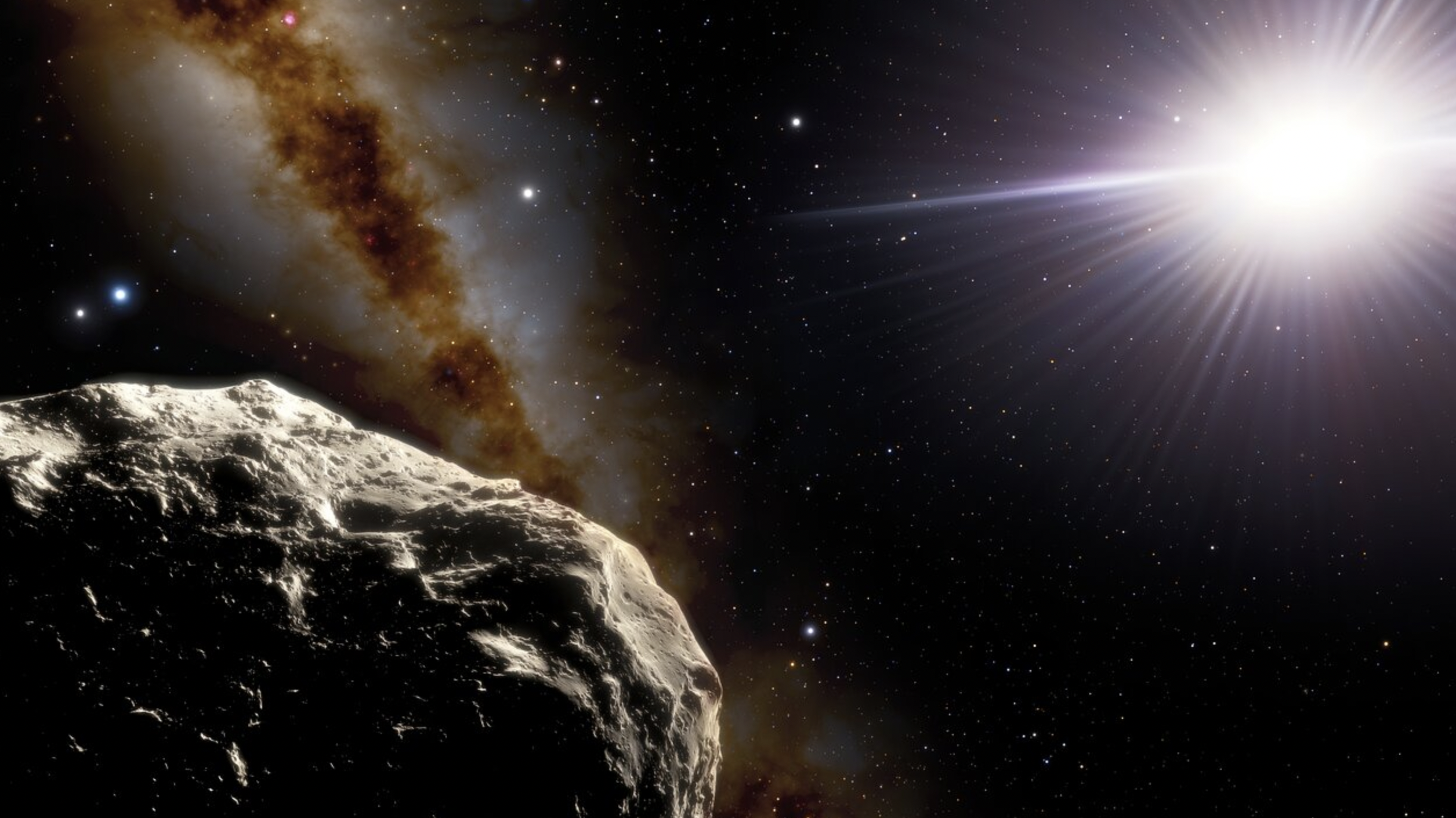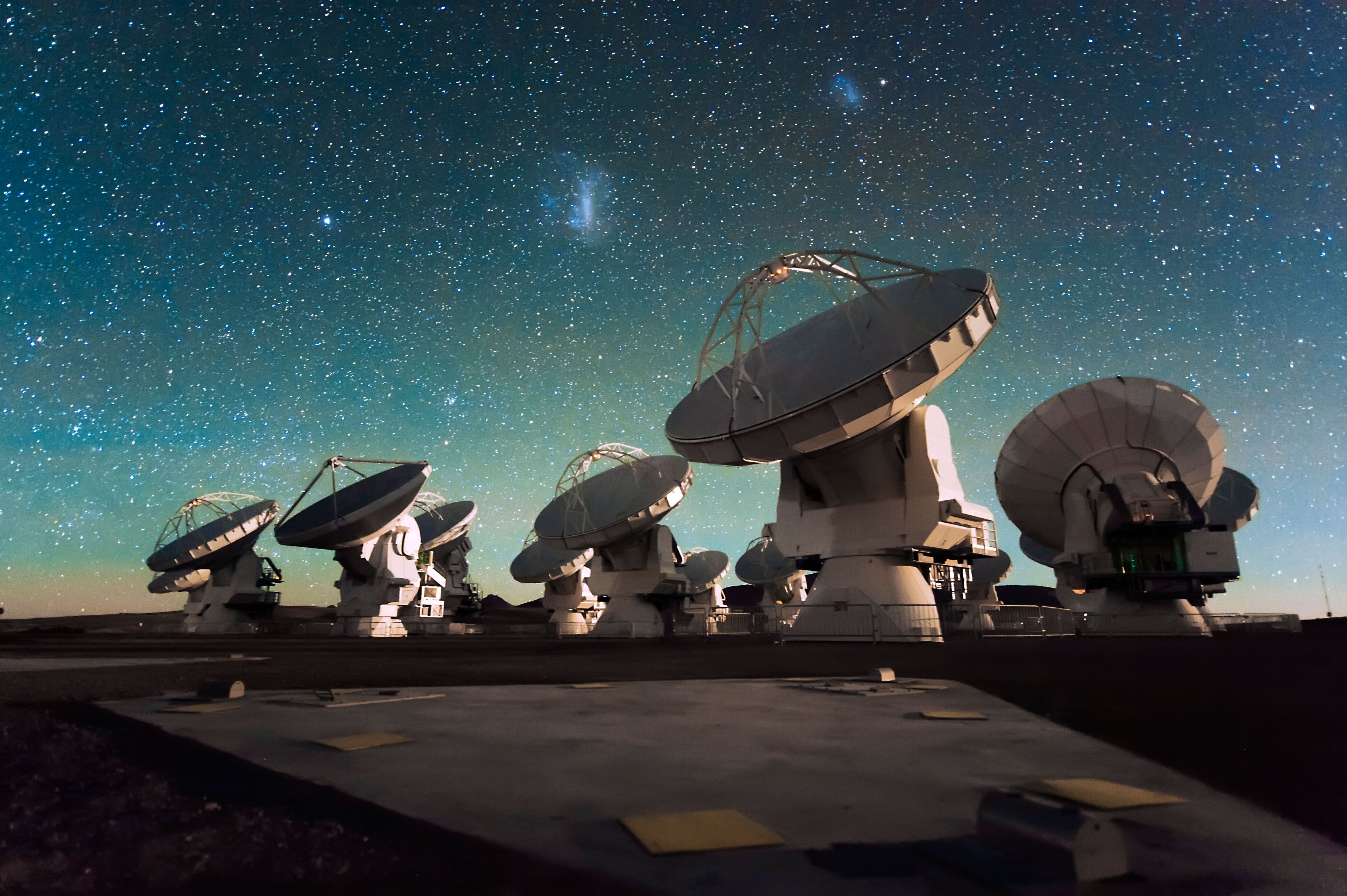The Double Asteroid Redirection Test will knock an asteroid out of orbit, effectively sacrificing itself.

NASA/Johns Hopkins APL/Steve Gribben
Launched on November 24 last year, NASA’s Double Asteroid Redirection Test (DART) is due to plow into a rocky asteroid moonlet called Dimorphos on Monday in an attempt to alter its orbit around the larger asteroid Didymos about seven million miles away from Earth.
While Dimorphos is about one-and-a-half times the size of a football field, this test is a dress rehearsal for the really “big one” that could potentially smash into Earth someday. So, DART’s goal is to collect as much data as possible during the test. Mission engineers hope to alter the speed of incoming objects by a centimeter per second. “That’s not very fast, but if you do it enough seconds in advance, you can cause it to miss the Earth entirely,” according to the mission overview by Johns Hopkins University’s Applied Physics Laboratory.

DART will dive into the moonlet at 14,000 miles per hour while broadcasting data and undoubtedly dramatic photos of the event. It will also eject a small satellite shortly before impact that will continue to take pictures.
The Italian Space Agency is principally responsible for providing images safely away from the impact, with the LICIACube. It’s one of two optical cameras on the CubeSat, a kind of miniature, shoebox-sized satellite that until recently has only traveled in Earth orbit, but now ventures on far-flung missions deep in our solar system. The cameras will collect data about DART’s impact as the CubeSat flies past, including the plume that arises from impact. They will potentially pick up imagery of the newly formed impact crater and view of the opposite side of Dimorphos as well.
Advertisement – Continue Reading Below
“We expect to receive the first full-frame images and to process them a couple of days after DART’s impact. We’ll then use them to confirm impact and to add relevant information about the generated plume—the real precious value of our photos,” Simone Pirrotta, LICIACube project manager, says in a NASA news release.
Meanwhile, the mission’s main camera, the onboard Didymos Reconnaissance and Asteroid Camera for Optical navigation (DRACO), will transmit images back to Earth, taking one photo every second until DART is obliterated on the asteroid.
After the mission is complete—and we say goodbye to DART—ground-based space telescopes will check Dimorphos’ orbit for changes.

How to Watch the DART Mission Live:
NASA TV will start a live broadcast at 6 p.m. ET on Monday, September 26. Actual scenes of the DART collision with Dimorphos are expected at 7:14 p.m. ET.
You can also watch it on the NASA TV YouTube channel, on Space.com, or on CNET Highlights.
Early in the feed, you’ll be seeing space, so it will appear black. However, as the DART spacecraft approaches the asteroid pair, you’ll begin to see some action, according to CNET.
Source: www.popularmechanics.com








